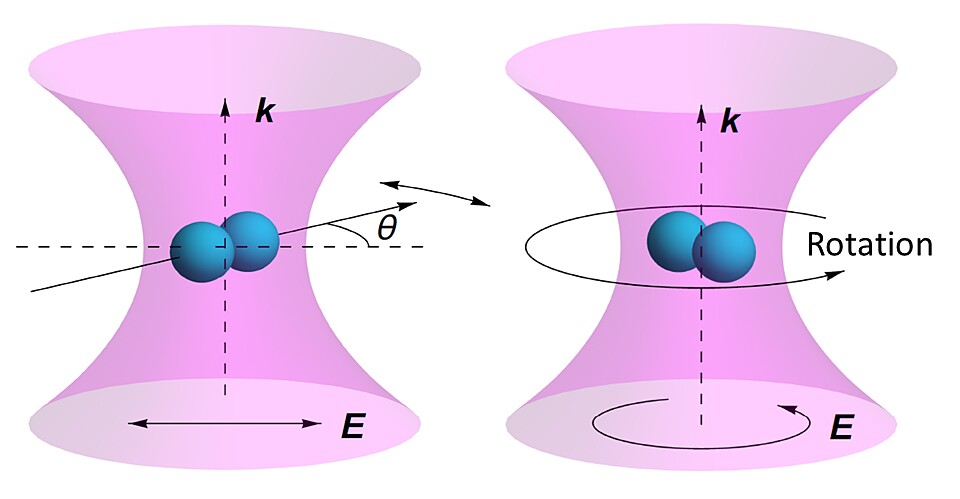Using a high-powered laser, researchers at Purdue University have made a microscopic "dumbbell" the fastest spinning object ever created
Purdue University/Vincent Walter
1/4
A microscope image of the silica "dumbbells"
Purdue University
2/4
The researchers say the tiny dumbbells could be used to study vacuum friction and gravity on the quantum scale
Purdue University
3/4
Using a high-powered laser, researchers at Purdue University have made a microscopic "dumbbell" the fastest spinning object ever created
Purdue University/Vincent Walter
4/4
If the laser light is linearly polarized, it imparts a vibration to the suspended particles, while using circular polarization sets them spinning instead
Purdue University/Tongcang Li
The fastest-spinning manmade object has been created in a lab at Purdue University. This microscopic rotor is made up of two silica nanoparticles stuck together to form a "dumbbell," and by hitting it with laser light the team has sent it spinning at a blistering 60 billion rpm.
To get the nano-dumbbell going, the researchers placed it in a vacuum chamber and levitated it using "optical tweezers." This setup involves beaming laser light at the target from below, which creates a repulsive force and suspends the particle in midair. Scientists can then make the target vibrate by using a laser that's been linearly polarized, or make it spin by applying circular polarization.
Using the latter method, the team cranked up the dumbbell's rotation to 60 billion rpm. That's 100 times faster than the previous record for fastest-spinning manmade object, which was held by a team at the University of St. Andrews using a single particle in a similar setup.

Purdue University/Tongcang Li
The point of these systems is to help scientists study the murky world of quantum physics. Spinning these tiny tops could help researchers measure vacuum friction, while the vibrating dumbbells could be used as tiny torsion balances to study gravity and what else is happening in a vacuum.
"People say that there is nothing in vacuum, but in physics, we know it's not really empty," says Tongcang Li, an author of the study. "There are a lot of virtual particles which may stay for a short time and then disappear. We want to figure out what's really going on there, and that's why we want to make the most sensitive torsion balance."
The research was published in the journal Physical Review Letters. The team demonstrates the work in the video below.
Source: Purdue University
World's Fastest Spinning Nanoparticle

